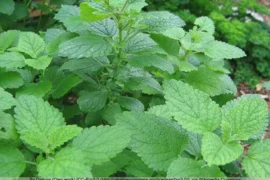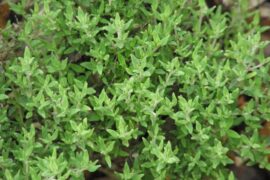Introduction
Are you looking to make your farming practices more sustainable and efficient? Healthy farming is about more than just growing crops; it’s about enhancing soil fertility, supporting biodiversity, and reducing the need for chemical inputs. The types of plants you choose can play a critical role in this. In this blog post, we’ll explore six types of plants that are ideal for healthy farming and how they can help you create a more productive and environmentally friendly farm.
What is Healthy Farming?
Healthy farming refers to agricultural practices that promote long-term sustainability, soil health, and biodiversity. It’s about working with nature, rather than against it, to create a productive and resilient farming ecosystem. By choosing the right plants, farmers can reduce reliance on synthetic fertilizers and pesticides, while improving the overall health of their land.
Why Choosing the Right Plants Matters
The types of plants you grow can make or break your farming success. Different plants have unique abilities to enrich the soil, control pests, and attract pollinators. By strategically selecting plants that work well together, you can enhance soil structure, increase yields, and reduce environmental impact. Let’s dive into the six types of plants that can make a big difference in healthy farming.
1. Legumes: The Nitrogen Boosters
1.1 Why Legumes are Ideal for Soil Health
Legumes, such as beans, peas, and lentils, are a farmer’s best friend when it comes to nitrogen fixation. These plants have a special relationship with nitrogen-fixing bacteria in their root nodules, which convert atmospheric nitrogen into a form that plants can use. This reduces the need for chemical nitrogen fertilizers, which can be expensive and harmful to the environment.
1.2 Popular Legume Varieties for Farming
Some of the most commonly used legumes in farming include soybeans, chickpeas, and clover. These plants not only boost nitrogen levels in the soil but also provide valuable crops for human consumption or animal feed.
1.3 How Legumes Improve Crop Rotation
Incorporating legumes into crop rotation helps break disease cycles and replenish soil nutrients, making it a key strategy in sustainable farming. After harvesting a legume crop, farmers can plant nitrogen-demanding crops like corn, knowing that the soil has been naturally enriched.
2. Cover Crops: Soil Protectors
2.1 What are Cover Crops?
Cover crops are plants grown specifically to cover the soil, rather than for harvest. They help prevent erosion, improve soil structure, and enhance organic matter in the soil.
2.2 Benefits of Using Cover Crops in Healthy Farming
Cover crops such as rye, barley, and vetch protect the soil from erosion during off-seasons. They also increase soil fertility by adding organic matter, reducing the need for synthetic inputs.
2.3 Examples of Effective Cover Crops
Popular cover crops include clover, radish, and buckwheat. These plants are fast-growing and provide excellent ground cover, protecting the soil from the elements while improving its quality.
3. Perennial Plants: Long-term Sustainability

3.1 Why Perennial Plants are Important for Soil Stability
Perennial plants grow for multiple seasons, unlike annuals, which complete their life cycle in one growing season. This allows perennials to establish deep root systems, improving soil structure and preventing erosion over time.
3.2 Types of Perennial Plants for Farming
Perennial crops such as asparagus, artichokes, and fruit trees provide consistent yields year after year with minimal disturbance to the soil.
3.3 Economic and Environmental Benefits of Perennials
Perennials reduce the need for tilling, which can degrade soil quality. They also require fewer inputs like water and fertilizer, making them cost-effective and environmentally friendly.
4. Pollinator-friendly Plants: Supporting Biodiversity
4.1 The Role of Pollinators in Healthy Farming
Pollinators like bees, butterflies, and birds are crucial for the reproduction of many crops. Without them, plants would struggle to produce fruits and seeds. By growing pollinator-friendly plants, farmers can boost their yields while supporting local biodiversity.
4.2 Best Pollinator-friendly Plants to Grow
Some of the best plants to attract pollinators include lavender, sunflowers, and borage. These plants provide nectar and pollen that pollinators need to thrive.
4.3 How Pollinator-friendly Plants Improve Yields
By attracting a healthy population of pollinators, these plants help ensure that crops like fruits and vegetables are properly pollinated, leading to higher yields and better-quality produce.
5. Root Vegetables: Enhancing Soil Structure

5.1 How Root Vegetables Help with Soil Aeration
Root vegetables, such as carrots, beets, and radishes, play a vital role in soil health by naturally aerating the soil. Their deep roots break up compacted soil, allowing air, water, and nutrients to penetrate more easily.
5.2 Common Root Vegetables Ideal for Farming
Popular root vegetables for healthy farming include carrots, turnips, and parsnips. These crops not only improve soil structure but also provide nutritious produce for the market.
5.3 The Role of Deep-rooted Plants in Soil Health
Deep-rooted plants like root vegetables can access nutrients that shallow-rooted plants can’t reach. This improves nutrient cycling in the soil and makes the land more productive.
6. Herbs: Natural Pest Controllers

6.1 The Benefits of Using Herbs as Companion Plants
Herbs such as basil, mint, and thyme can be used as companion plants to repel harmful pests and attract beneficial insects. This reduces the need for chemical pesticides, making your farm more sustainable.
6.2 Herbs that Repel Pests and Attract Beneficial Insects
Some of the best herbs for pest control include rosemary, which deters mosquitoes and flies, and marigolds, which repel nematodes and aphids.
6.3 How to Incorporate Herbs into a Healthy Farming System
Plant herbs around the borders of your crop fields or interplant them with vegetables to create a natural pest barrier. Herbs can also improve soil health and add flavor to your farm’s produce offerings.
How to Combine These Plants for Maximum Yield
The Importance of Plant Diversity in Farming
Diversifying the types of plants you grow helps create a more resilient farming ecosystem. Each plant has unique benefits that, when combined, can improve soil health, reduce pest pressure, and increase overall yields.
Creating Synergistic Crop Combinations
For example, you could plant legumes alongside pollinator-friendly plants to boost nitrogen levels in the soil while attracting bees and butterflies. Or combine root vegetables with cover crops to improve soil structure and fertility at the same time.
The Environmental Impact of Choosing the Right Plants
Reducing the Need for Chemical Fertilizers and Pesticides
By choosing plants that improve soil health and repel pests naturally, you can significantly reduce your reliance on synthetic inputs. This not only saves money but also reduces your farm’s environmental footprint.
Enhancing Biodiversity Through Plant Choice
Healthy farming practices support biodiversity by providing habitat for beneficial insects, birds, and other wildlife. The more diverse your plant selection, the more balanced your farm’s ecosystem will be.
Best Practices for Healthy Farming
Crop Rotation Strategies
Rotate crops to prevent the depletion of specific soil nutrients and reduce the spread of crop-specific pests and diseases. This simple practice can significantly improve long-term soil health.
Sustainable Water Management
Choose drought-tolerant plants where possible, and use mulching and drip irrigation to reduce water waste. Proper water management is key to sustaining a healthy farm.
Maintaining Soil Fertility with Organic Inputs
Composting and adding organic matter like manure can help maintain soil fertility over time, further reducing the need for chemical fertilizers.
Conclusion
Choosing the right plants is crucial for healthy farming. By incorporating legumes, cover crops, perennial plants, pollinator-friendly flowers, root vegetables, and herbs, you can improve soil health, increase yields, and reduce your reliance on synthetic fertilizers and pesticides. These plants not only enhance your farm’s productivity but also contribute to a healthier and more sustainable ecosystem.
FAQs
1. What is the best plant to start with for beginner farmers?
For beginner farmers, legumes such as beans or peas are great choices. They are easy to grow and help improve soil fertility naturally.
2. How do legumes benefit soil health?
Legumes fix atmospheric nitrogen into the soil, reducing the need for chemical fertilizers and enriching the soil for other crops.
3. Can perennial plants be combined with annual crops?
Yes, perennial plants can be interplanted with annual crops to maximize land use and improve soil stability.
4. How do cover crops improve soil fertility?
Cover crops add organic matter to the soil, protect against erosion, and enhance water retention, all of which contribute to better soil fertility.
5. Which herbs are most effective for pest control in organic farming?
Herbs like rosemary, marigold, and mint are highly effective at repelling pests and attracting beneficial insects, making them excellent for organic farming.







